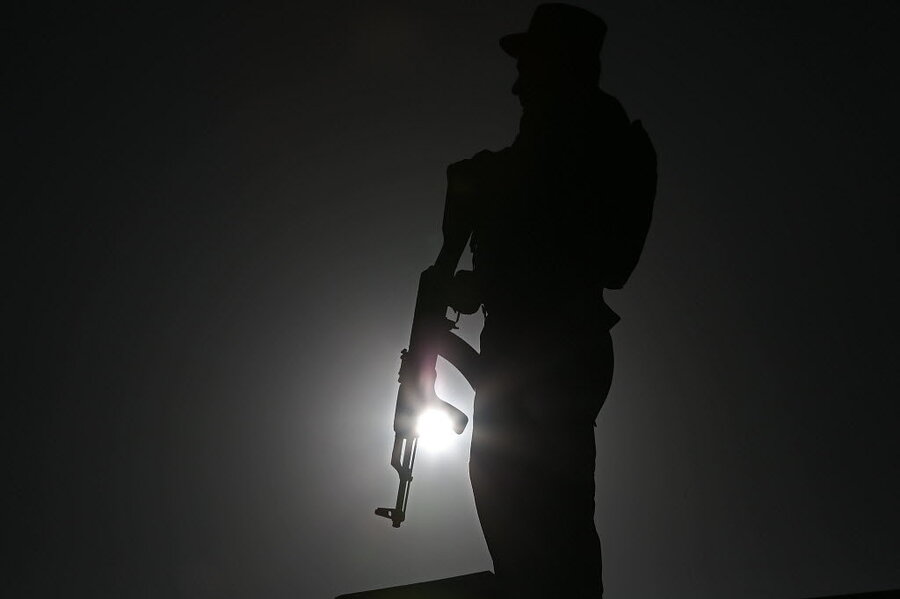'Friendly fire' deaths in Afghanistan: Relatively rare, they draw attention.
| Washington
Five American Special Operations Forces soldiers on a mission with Afghan troops in southern Afghanistan were killed in what appears to have been one of the worst cases of friendly fire of the 13-year-old Afghanistan war.
The deadly incident took place Monday in Zabul Province when forces involved in a joint US-Afghan operation came under attack from insurgents and called in air support, the Pentagon and NATO officials said Tuesday. The Pentagon said it is investigating “the likelihood that friendly fire was the cause” of six deaths – the five US servicemen and one Afghan soldier – based on reports that the B-1 bomber responding to the air support request attacked the wrong target.
In a statement Tuesday, NATO said the deaths occurred when a unit returning to base after an operation encountered “enemy forces” but that “tragically, there is the possibility that fratricide may have been involved.”
The incident occurred as Taliban insurgents step up their operations as part of an effort to destabilize Saturday’s run-off presidential election. But it also comes in the context of shrinking US involvement in combat operations with Afghan forces as the US-led International Security Assistance Forces prepare to fully withdraw from Afghanistan by the end of the year.
Friendly-fire incidents are responsible for only a small percentage of the more than 3,400 international coalition deaths (of which more than 2,175 have been Americans) in the Afghanistan war, but such deaths have often received added attention.
One of the most notorious incidents occurred in April 2002, when an American F-16 dropped a laser-guided bomb on Canadian troops conducting night exercises, killing four Canadians and injuring eight. The F-16’s pilot, Air National Guard Maj. Harry Schmidt, was found guilty of dereliction of duty.
In another controversial incident in 2004, former NFL player Pat Tillman was killed in what the Pentagon determined was a firefight between two US units that each mistook the other for the enemy.
Friendly-fire casualties occurred occasionally in subsequent years as Coalition forces engaged in heavy fighting, particularly in the restive south and east of the country.
But in recent years, as NATO forces shifted increasingly to training and assisting the growing Afghan security forces, attention has shifted to so-called “green-on-blue” incidents, as cases of Afghan forces firing on their US and other foreign counterparts increased.
Total international forces in Afghanistan now stand at about 50,000, with just under 33,000 of those being Americans. NATO’s mission in Afghanistan will draw to a close by the end of the year, but President Obama has announced that 9,800 US military personnel will remain next year for training and limited counterterrorism operations.
An uncertain number of other foreign forces are expected to remain for training assistance as well.







